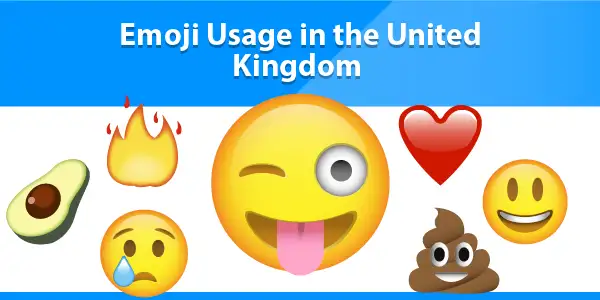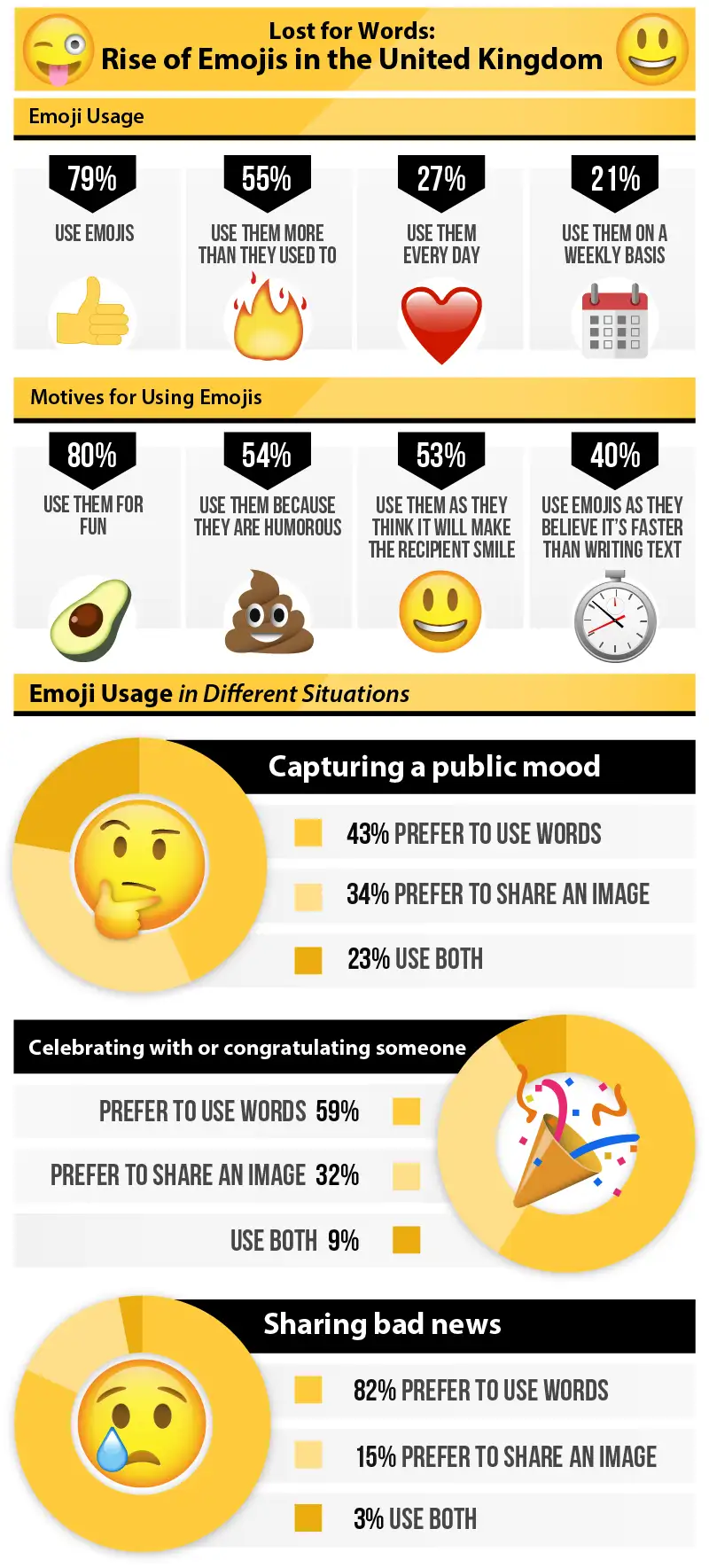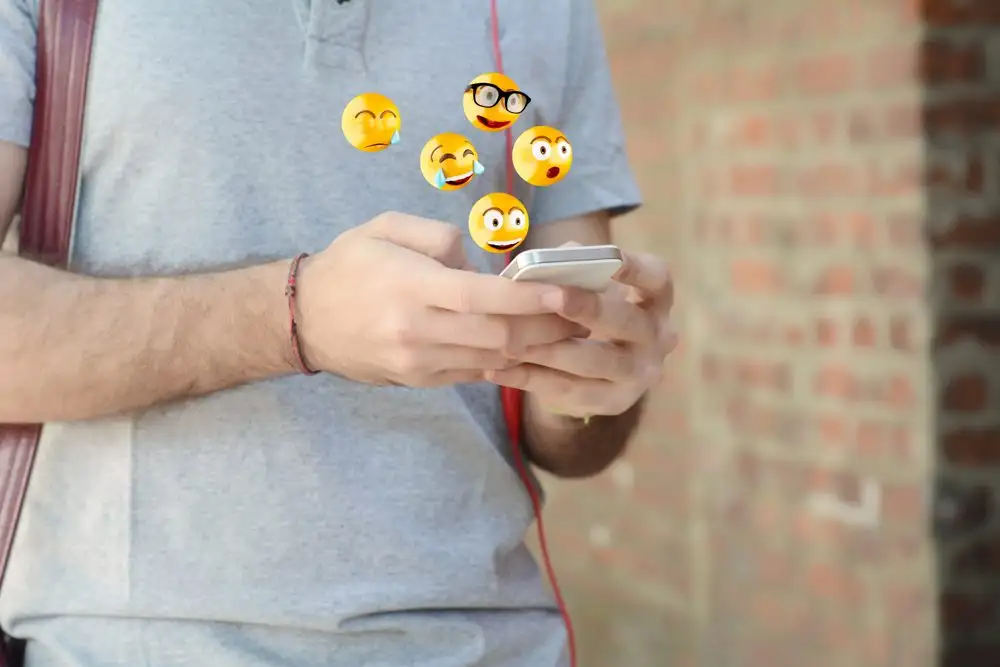
UK Emoji Usage in the United Kingdom
What are emojis?
Often referred to as modern day hieroglyphics – emojis are digital icons which have the ability to convey a range of emotions, ideas and feelings. According to ‘Unicode Consortium’, the non-profit group responsible for approving and governing the yellow creations of joy, there are over 2,600 registered emojis.
The rise of the yellow army
From their humble inception in Japan during the late 1990’s, the rise of emojis has been nothing short of phenomenal. This notion is demonstrated through research carried out by ‘TalkTalk Mobile’, who discovered 40% of UK residents have sent messages made up entirely of emojis. On a more international scale, emotional marketing platform ‘Emogi’ astonishingly found that 92% of the online population now utilise emojis. Furthermore, an emoji was also crowned word of the year by ‘Oxford Dictionary’ in 2015, with the accolade going to the facial expression of “tears of joy”.

Photo Credit: photototo / Shutterstock
Why people are using emojis
Easier form of expression
People often find it difficult to express themselves verbally, as they can’t think of the appropriate words to use or structure a sentence in the most digestible way. In such cases, emojis are a massive help. With so many too choose from, there is bound to be the right emoji to capture the intended tone and mood of a message.
Highly engaging
Rather than writing long passages of text which are likely to be tedious and generic for recipients, emojis complement words in a fun and playful way. As soon as recipients see emojis integrated into a message, they are already put into a better mood before reading it and instantly drawn to the sea of brightly coloured icons.
Situational adaptability
In serious situations, people want to put their point across but their words might be viewed as overly critical or unfair; even when that was not the intended purpose. Adding emojis in such contexts not only helps diffuse any misunderstandings but conveys the constructive nature in which someone is trying to be helpful. In a similar nature, they can also liven up communication mediums which are usually associated with being serious such as emails.
Captures feelings
Emojis are also fantastic for those who have a hard time articulating their feelings. They provide a visual avenue for individuals to capture their feelings towards a range of situations, from happy to sad.
Our research
Interested in the rapid growth of emojis, Reboot Marketing analysed findings from Ofgem (the government regulator for gas and electricity networks) to find out how people in the UK are engaging with and using emojis.

The research revealed that 79% of Brits use emojis. 55% state they use them significantly more than they did in the past. 27% admit to using them every day whereas 21% only do so on a weekly basis. Despite their popularity, only 27% consider emojis an important tool in their communication streams.
Focusing on some of the motives and reasons as to why those in the UK use emojis, 80% do so because they think they are fun. In similar ways, 54% use them because they are humorous and 53% believe it will make the recipient smile. Surprisingly, just 40% cite using emojis due to how quick they are in comparison to writing text.
Fascinatingly, emojis are more likely to be used when capturing a public mood (34%) or celebrating with/congratulating someone (32%) as opposed to the scenario of sharing bad news (15%). ‘Capturing a public mood’ refers to UK resident’s expressing their reaction to topical social, economic and political issues.

Photo Credit: MEgo-studio / Shutterstock
How brands can captivate consumers with emojis
Identify
Scatter though the thousands of available emojis and identify the ones which most represent or align with the brand. This will give your brand a boundary to use the most appropriate and coherent set of emojis for any campaigns and marketing initiatives.
Research
Before selecting or using an emoji, make sure to verify the proper representation. With your brands social media interactions likely to reach a global audience, you don’t want to use any emojis which may cause offence due to differing cultural interpretations or meanings.
Test
Before committing to a large-scale campaign using emojis, it’s a good idea to first run a small trial. In doing so, you can see how a small fraction of your intended audiences are reacting to them through social media metrics such as likes, shares and response rates. If the consensus is generally negative, then revaluate and readjust the combination of emojis you plan to use.
Consistency
Follow up any positive responses with emojis acknowledging the praise. For instance, a comment on a social media platform saying, “love it”, respond with a smiley face and thumb up icon. If you’re consistently engaging in such a way then your brand will not only be perceived in a creative light but one that is evolving with the times.
Shai Aharony, Managing Director of Reboot Marketing commented:
“I think emojis in the modern digital landscape have been revolutionary. Emojis are essentially a visual language which has provided users the ability to not only substitute or save words but create a dialogue which they might otherwise find difficult expressing through sentences and text. They are colourful, fun and relatable – three components which I think really make them engaging to use. Additionally, the sheer scale of available and upcoming emojis make them highly adaptable as well as desirable to use in a range of situations. Emojis are here to stay and will continue to evolve as a communication phenomenon”.
